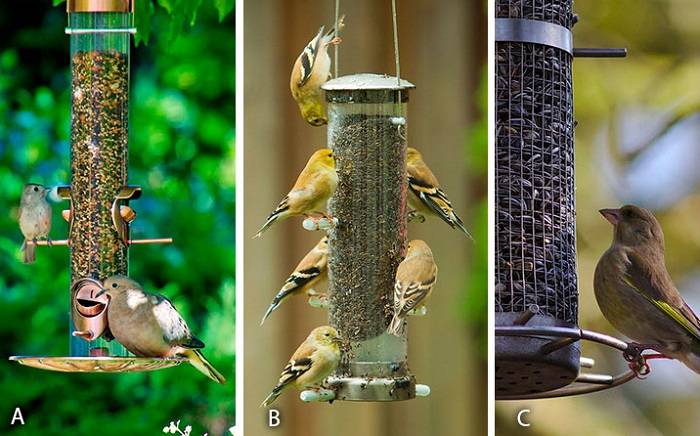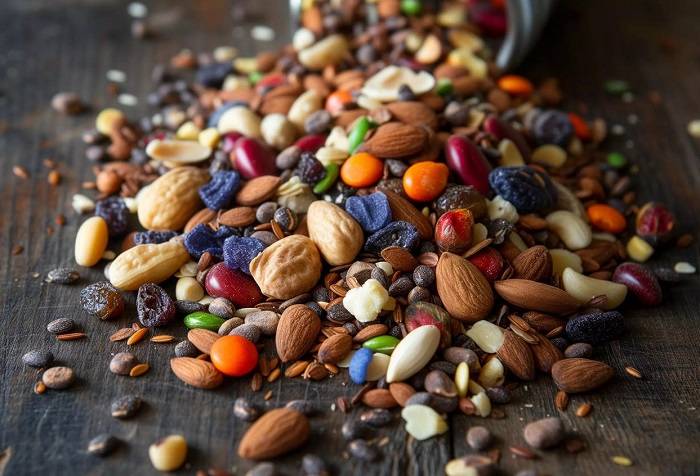Bird feeders are a delightful addition to any garden, providing a reliable food source for our feathered friends while offering birdwatchers a front-row seat to the wonders of avian activity. Among the various types of bird feeders, seed feeders stand out as one of the most popular and versatile options, catering to a wide range of bird species with their diverse seed offerings. In this comprehensive guide, we delve into the world of bird seed feeders, exploring their types, benefits, maintenance, and tips for attracting a diverse array of garden birds.
Types of Bird Seed Feeders

Hopper Feeders:
Hopper feeders feature a reservoir or hopper that holds a large quantity of bird seed, which is dispensed gradually as birds feed. These feeders typically have a roof or cover to protect the seed from rain and snow, with perches or feeding ports for birds to access the seed.
Tube Feeders:
Tube feeders consist of a cylindrical tube with multiple feeding ports and perches along its length. They are ideal for dispensing smaller seeds such as nyjer, millet, and sunflower hearts, attracting finches, sparrows, and other small songbirds.
Platform Feeders:
Platform feeders consist of a flat platform or tray where bird seed is spread out for easy access by ground-feeding birds such as cardinals, jays, and doves. They may feature a roof or cover to protect the seed from rain and provide shelter for feeding birds.
Window Feeders:
Window feeders are designed to attach directly to the outside of windows, providing a close-up view of feeding birds from the comfort of indoors. They typically feature suction cups or brackets for secure attachment and may include perches or trays for birds to access the seed.
Benefits of Bird Seed Feeders
Supplementary Food Source:
Bird seed feeders provide a reliable supplementary food source for garden birds, especially during periods of food scarcity such as winter or times of natural food shortage.
Species Diversity:
By offering a variety of seed types and feeder designs, bird seed feeders attract a diverse array of bird species, ranging from small finches and sparrows to larger songbirds and woodpeckers.
Educational Opportunities:
Bird seed feeders offer excellent opportunities for birdwatching and nature observation, allowing enthusiasts to learn about bird behavior, feeding preferences, and species identification.
Gardening Benefits:
Birds attracted to seed feeders may also provide pest control services by consuming insect pests such as caterpillars, aphids, and beetles, benefiting gardeners and promoting ecological balance.
Choosing the Right Seed Mix
Sunflower Seeds:
Black oil sunflower seeds are a favorite among many garden birds, offering a high-energy food source rich in protein, fats, and nutrients. They are especially popular with finches, chickadees, and nuthatches.
Nyjer Seeds:
Nyjer seeds, also known as thistle seeds, are favored by finches, siskins, and redpolls, offering a nutritious food source with a high oil content. They are typically dispensed in tube feeders with small feeding ports.
Millet:
Millet is a small, nutritious seed that appeals to a wide range of bird species, including sparrows, juncos, and doves. It is often included in mixed seed blends and platform feeders.
Safflower Seeds:
Safflower seeds are an excellent choice for attracting cardinals, grosbeaks, and other larger songbirds. They have a thick shell that deters squirrels and less desirable bird species.
Placement and Maintenance Tips
Location:
Place bird seed feeders in a quiet, sheltered location with good visibility from indoors, away from potential hazards such as predators, windows, and reflective surfaces.
Cleaning:
Regular cleaning of bird seed feeders is essential to prevent the buildup of mold, bacteria, and parasites. Wash feeders with warm, soapy water and rinse thoroughly before refilling with fresh seed.
Bird Seed Feeders
Refilling:
Keep bird seed feeders well-stocked with fresh seed to attract and retain feeding birds. Monitor seed levels regularly and refill feeders as needed, especially during periods of high bird activity.
Squirrel Deterrence:
To deter squirrels and other unwanted visitors, consider using squirrel-proof feeders with built-in mechanisms such as weight-activated perches or baffles. Alternatively, place feeders on poles or hangers equipped with squirrel baffles or greased poles.
Attracting Garden Birds
Native Plants:
Planting native trees, shrubs, and flowers in your garden provides natural food sources and shelter for birds, enhancing the attractiveness of bird seed feeders.
Water Source:
Providing a clean, reliable water source such as a birdbath or shallow dish encourages birds to visit your garden and complements the food provided by seed feeders.
Year-Round Feeding:
Maintain bird seed feeders year-round to support resident bird populations and attract migratory species during their seasonal movements.
Related Post:
Cracking the Cayuga Duck Egg Mystery: Unveiling the Secrets of Cayuga Duck Eggs
Exploring Duck-Chicken Compatibility: Can They Coexist?
Unraveling the Complex World of Aggressive Male Duck Behavior
In conclusion, bird seed feeders are a valuable tool for nurturing avian visitors and enhancing the biodiversity of gardens and green spaces. By choosing the right feeder designs, seed mixes, and placement strategies, enthusiasts can create welcoming habitats for a diverse array of bird species while enjoying the pleasures of birdwatching and nature observation. With proper care and attention, bird seed feeders can serve as focal points for bird activity and bring joy and wonder to bird enthusiasts of all ages.



